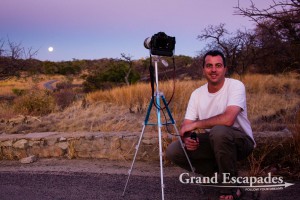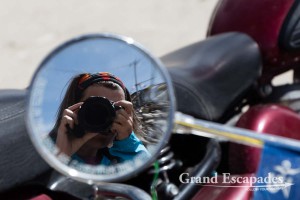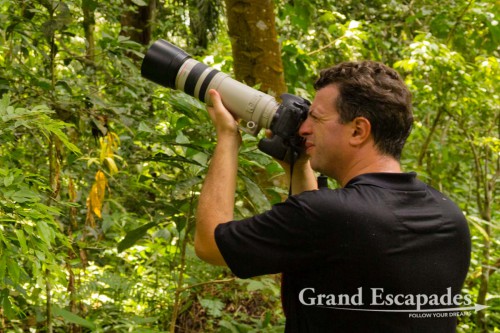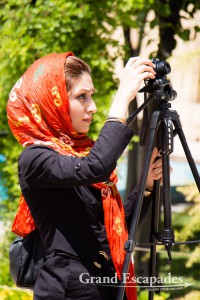11 Reasons Why You Should Always Take Your Pictures In RAW
We have heard this question many times, and listened to endless discussions on this subject. The answer is quite straightforward though. If you plan to enhance your pictures, you should always take them in RAW.
What is RAW & what is JPEG?
RAW is a proprietary file format (.CR2 for Canon, .NEF for Nikon). When taking a picture using RAW, the camera captures all the data as recorded by the sensor of your camera.
JPEG or JPG stands for “Joint Photographic Experts Group” or “Image File Format”. JPEG are standardized pictures. When using JPEG, your camera actually takes the picture in a RAW format, applies a more or less strong compression as well as a range of defined settings like White Balance, Sharpness, Color Space & Color Saturation, finally erases the RAW file and saves the picture as a JPEG.
What are the 11 main advantages of RAW?
1. Higher Quality of Image
- No compression
When you take a picture, the first file is a RAW file. Only in a second step does the camera convert and compress the image into a JPEG. So when you take pictures in RAW, you don’t loose any information through a compression process.
- All data available
Think of RAW as a “Digital Negative” of your picture that waits to be developed into a picture. With all possible data available, you can then decide precisely how you want to “develop” your picture to reach the best result. Such improvements are best done in Lightroom (partly in an automated process), since its computing power is much higher than your camera.
- Increased Brightness
JPEG captures pictures in 8 bit, RAW in 12 or even 14 bits. To make a long story short, it means that you have up to 4.096 different levels of brightness with RAW against 256 with JPEG. Quite a difference, actually!
- Extend the Dynamic Range
Are you into HDR Photography? As you have more information available on the exposure, HDR programs can create a better result from a RAW file than from a JPEG.

Gilles near View of the World (Malindidzimu), Cecil Rhodes’ Grave, Matopos or Matobo National Park, Zimbabwe, Africa
2. Many more possibilities to improve your pictures
- Easy Use
Believe it or not, with the right tool (like Lightroom), optimizing pictures in RAW is much easier and much quicker than in JPEG. This doesn’t have to be Rocket Science. More often than not, a few clicks will tremendously improve the result.
- White Balance
With RAW, one click can change the White Balance. You want to make a sunny day out of a rainy day? (Almost) no problem!
- Under / Over-Exposure
Sometimes you simply do not have the time to expose your picture correctly. Or worse: part of the picture is under-exposed (in the shade) and part of it is over-exposed (in the sun). Using RAW you have more information available, the correction will bring far better results.
- Noise Reduction
Lightroom offers much better algorithm to optimize sharpness & especially to reduce noise than your camera, and is much more powerful at that…
This is especially important when shooting pictures with low light environments.
- Color Space
If you want to sell picture via a Stock Image Agency, you must have the final picture in Abode RGB (1998). If you want to put your pictures on your website, you will want them in sRGB, to enhance the compatibility with Internet browsers.
That is only possible if you take your pictures in RAW, else your camera has already applied the defined settings (normally sRGB).

Khardung La, the highest motorable road in the world, at 5.602 meters, on the way to the Nubra Valley from Leh, Ladakh, India
3. Improve your Workflow
- Non-Destructive Editing
Non-Destructive editing allows you to make changes to an image without overwriting the original image data, which remains available in case you want to go back to it. Because Non-Destructive editing doesn’t remove data from an image, the image quality doesn’t degrade when you make edits. You can perform non-destructive editing in Lightroom or Photoshop working with Adjustment Layers or Smart Filters.
- Optimize your Workflow
Lightroom allows you to work your RAW pictures in Batch (not only one picture but a group of pictures at a time), which allows you to work a lot faster.
Advantages of JPEG (supposedly…)
- JPEG requires less storage space than RAW
Honestly, how much does a 2 TB external hard-drive or a 32 GB SD Card cost nowadays?
- JPEG doesn’t need to be edited
If you use a software like Lightroom, your RAW pictures are automatically converted while downloading them onto your computer, so this is no real advantage in our opinion.
- RAW slows your camera down
This is actually untrue, as the camera will create a RAW file anyway and then convert it into JPEG. So this is actually one step less.
- RAW is a Proprietary Format that you might no longer be able to read in the future
This is true! However, in our opinion, this argument isn’t a real one, as you can convert your RAW Files (.CR2 or .NEF) into DNG (Digital Negative) when downloading them on your computer (it can be a defined setting in Lightroom).
Moreover, how likely is it that Canon or Nikon will disappear from the market within the next years? Should that happen anyway, you can still convert your .CR2 or .NEF into .DNG with you’re your current Lightroom version.
As a conclusion?
RAW has a wide range of advantages (we listed here 11) against JPEG. All professionals use RAW. There must be a good reason for that!
At this point we want to make a concession: when taking pictures for a filmstrip, we use our GoPro, which only shoots in JPEG. But for a filmstrip, JPEG is enough, as there won’t be much editing…





Thank you for this post, Prue and I had a discussion recently on the impact of taking photographs on RAW versus JPEG. We came to the same conclusion without any strength in knowledge to back it up.
This is now our proof, hurrah!
I am taking a slow and steady path into this world of photography, it is quite overwhelming at times, Thanks for your clear and concise advice.
Kind regards,
Rebecca
Hi Rebecca,
Thank you for your feedback.
I asked myself during quite a while this question, and unfortunately couldn’t find any reasonable explanation of the difference and especially the advantages, rather people stating matter of factly: RAW or JPEG.
Glad that this article helped (was quite a challenge to write)
Cheers, Gilles
Gilles, you seem to be confused with compression and quality / data oss : it simply has nothing to do. For instance : “AAAAA” can be compressed in “5A” without any quality loss.
Fact is that in JPG the level of compression (hence the sile size) rules the quality. JPG was widely adopted as an alternative to GIF for producing light display elements for low bandwidth internet access. But you can use JPG without compression, without quality loss, in high definition (over 300 is you wish). So you should consider comparison using appropriated settings : JPG is great for a compromise between file size, definition and data loss. You can’t divide a RAW file by 500% is required, so don’t compare it to JPG using compression if you refer to quality.
Moreover you should have a look at PNG which has the best of GIF and JPG features.
RAW is widely used because… it is raw ! The data refers to the hardware device at its best, with no idea on what support it shal be used. JPG refers to the web world, not the printing or video or TV world. RAW data is pure and is widely used as “original matrix” with no alteration or interpretation about what shall be done with the image and how it shall be viewed.
JPG is not your foe.
Regards, William
Hi Willian,
Thanks for your feedback.
Compression does not, indeed, necessarily mean lost of quality (I won’t start at this point a debate on what is actually quality). However, it means a lost of information, for instance the setting of the Color Space or the White Balance, which you no longer will be able to change. And that can actually impact the quality of the final result.
Moreover, if “AAAAA” seems to be like “5A”, it is not the same things, especially as far as image quality is concerned.
I use myself JPEGs in a second step, to publish the pictures (Low Resolution for the web, High Resolution when I sell my pictures to a Stock Image Agency), but do not want to loose the possibilities of RAW development & RAW workflow in the development mode. But going straight to JPEG (in the camera) means you loose a lot of information and hence a lot of post precessing opportunities.
Cheers, Gilles
This is so true! I mostly shoot in RAW to get the most out of my photos. I know somebody who bought a DSLR and use the lowest photo quality (not just JPEG, but the lowest quality or JPEG) I mean what is the point of using a DSLR if you are just using the poorest quality. I do understand people who use the highest quality of JPEG, because they need space or doesn’t want to edit the photos (I don’t understand why they don’t want to edit them), but using the lowest quality?? I don’t get it….
Thanks for sharing, perhaps it will make more using RAW 🙂
Hi Tine,
Thank for your feedback!
Indeed, space on SD-cards or external hard drive is no longer of any importance… So when jpeg, one should always use the highest quality!
If someone really doesn’t want to edit his picture and is sure he never will (how can one be that sure I don’t know), of course jpeg is an alternative.
But you can do so much more, with very little efforts!
I am fully with you
Cheers, Gilles